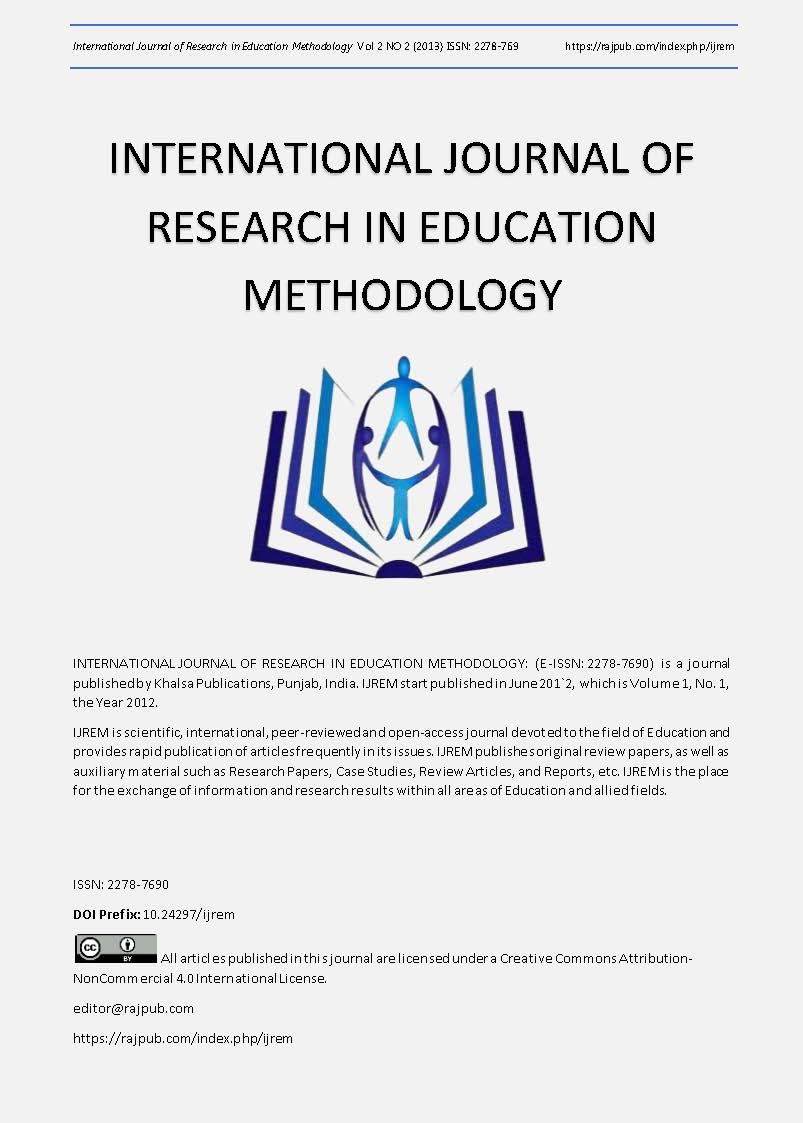GANDHIJI'S VISION ON PEACE EDUCATION
DOI:
https://doi.org/10.24297/ijrem.v2i2.4108Keywords:
Peace, EducationAbstract
Peace is an active and dynamic state in which one gets the opportunity to move forward towards the development without confusion. Peace entails the absence of conflicts, disputes, dissensions, fight and struggle. Harmony, cooperation, love, integration are the chief characteristics of the state of peace. Peace is a dynamic state and not a situation of the status quo. In a state of peace, man aspects the reality of VasudhaivKutumbakam. Within a state of peace, efforts are made for healthy coexistence to extend the welfare of the people. Peace is an active and dynamic state in which there is call to go forward. It is the pathway to progress without any fear and confusion. Education, likewise is the process that helps in making ones life purposeful. All constructive and welfare conditions that may be required for the purpose are also inherent in this process. The ultimate goal of education according to many philosophies including Vedic-Hindu is the attainment of Mukti or Moksha or Nirvana, which is considered as the highest stage of peace. Therefore, we can say that education and peace are interlinked. They are inseparable from each other. From this emerges the concept of peace education.
* Assistant Professor, Khalsa College of Education, Amritsar
Downloads
Downloads
Published
How to Cite
Issue
Section
License
 All articles published in Journal of Advances in Linguistics are licensed under a Creative Commons Attribution 4.0 International License.
All articles published in Journal of Advances in Linguistics are licensed under a Creative Commons Attribution 4.0 International License.








